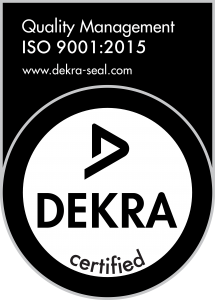860-829-2244
Eugenio Gallegos
@eugeniogallegos
Profile
Registered: 6 months, 2 weeks ago
Understanding Romania’s Public Health System: Services and Limitations
Romania’s public health system, like many across Japanese Europe, is a product of each historical influences and modern reforms. It's largely state-funded and designed to provide accessible care to all citizens, yet it faces numerous challenges, including underfunding, outdated infrastructure, and workforce shortages. Understanding how Romania’s healthcare system features — and where it falls short — can supply insights into each its present status and its potential for future development.
The Construction of Romania’s Public Health System
Romania operates a common healthcare system based mostly on the ideas of solidarity and equity. The system is primarily funded through a nationwide health insurance scheme managed by the National Health Insurance House (CNAS). Employees and employers contribute a share of income toward health coverage, which grants access to a wide range of services.
Public health services are available to all insured citizens and residents, and in emergency cases, even uninsured individuals are entitled to care. These services embody general practitioner (GP) consultations, specialist referrals, emergency treatment, hospital stays, maternity care, and a few prescription drugs. Preventive care corresponding to immunizations and screenings can be included in the public package.
Healthcare providers in Romania are each public and private, however public institutions remain the mainstay for the general population. The Ministry of Health oversees coverage development, regulation, and monitoring of health standards throughout the country.
Key Services Offered
Romania’s public health system provides a broad scope of care through a network of family docs, outpatient clinics, and hospitals. Family doctors act as gatekeepers, managing patients’ basic health needs and referring them to specialists when necessary. Hospitals are categorized into county, municipal, and clinical centers, offering varying levels of care primarily based on their size and resources.
Emergency services in Romania are relatively well-developed. The country boasts one of many fastest emergency response systems in Europe, with SMURD (Mobile Emergency Service for Resuscitation and Extrication) typically praised for its effectivity and professionalism.
Public health campaigns have also focused on infectious diseases, childhood vaccinations, and maternal care. Romania has made significant progress in rising immunization rates and reducing communicable illness outbreaks.
Challenges and Limitations
Despite the system's intentions, Romania's public healthcare still faces considerable limitations. Probably the most pressing issues is chronic underfunding. Romania spends significantly less per capita on healthcare compared to Western European nations. This has led to outdated hospital infrastructure, limited access to advanced technology, and inadequate medical supplies in some areas.
Staffing shortages are one other major concern. Hundreds of Romanian medical doctors and nurses have emigrated to work in Western Europe, drawn by better salaries and working conditions. This "brain drain" has left many rural and underserved regions without adequate medical personnel.
Corruption and bureaucratic inefficiencies additional hinder the system. Patients ceaselessly report long wait times, inconsistent service quality, and, in some cases, informal payments to receive faster or higher treatment.
Access to care can also be uneven across the country. Urban centers like Bucharest, Cluj-Napoca, and Timișoara typically have higher-equipped facilities and more specialists, while rural areas typically struggle with limited services and transportation issues.
The Path Forward
In recent times, Romania has taken steps to modernize its healthcare system. European Union funding has helped help infrastructure upgrades and digitalization efforts. The government has also introduced programs to retain medical professionals and improve training.
Nonetheless, sustained investment and systemic reforms are necessary to address deeper issues. Tackling corruption, improving transparency, increasing access to rural areas, and rising public health schooling will be key in strengthening Romania’s healthcare in the long run.
Understanding Romania’s public health system means recognizing each its commendable achievements and ongoing limitations. While the country provides essential services to its inhabitants, there may be significant room for improvement in funding, workforce development, and infrastructure. As healthcare remains a critical concern for Romania’s future, continued reform will be essential to make sure quality care for all citizens.
If you have almost any concerns relating to in which and also how to employ organizatii pacienti, you can e mail us at the web site.
Website: https://colegiulpacientilor.ro
Forums
Topics Started: 0
Replies Created: 0
Forum Role: Participant

